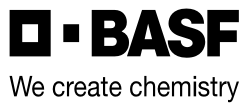Versys
Group 9D
Versys® insecticide quickly stops aphid and whitefly damage in fruits and vegetables.
- Rapidly stops feeding to limit feeding damage.
- Provides an extended duration of control.
- Controls pests that may have developed resistance to other chemistries.
- Safe on beneficial predatory insects to support integration into an integrated pest management program.
Labels & SDS
5 AVAILABLE
Labels & SDS
Benefits of Versys
- Versys insecticide has a new, unique mode of action known as chordotonal organ TRPV channel modulators.
IRAC Group 9D. - The chordotonal organs are biological stretch sensors.
They may be located in the antennae, mouth, legs, wings or thorax of insects. - These stretch sensors provide insects with their senses of hearing, orientation and balance.
In insect leg joints, the same sensors are critical for coordinated movement. - Versys acts selectively on these stretch sensors making it impossible for the insect to detect sound, gravity and the movement and position of body parts.
- Deaf, disoriented and uncoordinated, insects affected by Versys rapidly cease feeding.
Product Info & Application Guide
How Much to Apply
Begin applications once locally recommended thresholds are reached.
Crop |
Pests |
Application Rates |
|---|---|---|
Brassica vegetables1 |
Cabbage aphid, green peach aphid |
40.5 ml/ac (0.1 L/ha) |
Sweet potato whitefly, silverleaf whitefly |
142 to 202 ml/ac (0.35 to 0.5 L/ha) |
|
Cucurbit vegetables1 |
Melon aphid, green peach aphid |
40.5 ml/ac (0.1 L/ha) |
Sweet potato whitefly, silverleaf whitefly |
142 to 202 ml/ac (0.35 to 0.5 L/ha) |
|
Fruiting vegetables1 |
Green peach aphid, potato aphid |
40.5 ml/ac (0.1 L/ha) |
Sweet potato whitefly, silverleaf whitefly |
142 to 202 ml/ac (0.35 to 0.5 L/ha) |
|
Leafy vegetables1 |
Green peach aphid, potato aphid, lettuce aphid |
40.5 ml/ac (0.1 L/ha) |
Sweet potato whitefly, silverleaf whitefly |
142 to 202 ml/ac (0.35 to 0.5 L/ha) |
|
Leaf petioles vegetables1 |
Green peach aphid, potato aphid, lettuce aphid |
40.5 ml/ac (0.1 L/ha) |
Sweet potato whitefly, silverleaf whitefly |
142 to 202 ml/ac (0.35 to 0.5 L/ha) |
|
Tuberous and corm vegetables1 |
Green peach aphid, potato aphid |
40.5 ml/ac (0.1 L/ha) |
Sweet potato whitefly, silverleaf whitefly |
142 to 202 ml/ac (0.35 to 0.5 L/ha) |
|
| Pome fruits2 | Rosy apple aphid, green apple aphid |
40.5 ml/ac (0.1 L/ha) |
| Stone fruits3 | Rusty plum aphid, black cherry aphid, mealy plum aphid |
40.5 ml/ac (0.1 L/ha) |
Tree nuts3 |
Little hickory aphid, yellow pecan aphid, black marginated aphid |
40.5 ml/ac (0.1 L/ha) |
1 Do not apply more than 506 ml/ac (1.25 L/ha) per year.
2 Do not apply more than 202 ml/ac (0.5 L/ha) per year.
3 Do not apply more than 81 ml/ac (0.2 L/ha) per year.
Application Tips
- Ensure thorough and uniform coverage by using higher water volumes.
- Do not apply during periods of dead calm or when winds are gusty.
- Do not make more than two sequential applications of Versys insecticide before using an effective insecticide with a different mode of action.
Water volume
Ground application
40 L/ac (10 gal/ac) minimum (ensure thorough coverage)
Mixing order
1. Fill clean spray tank 1/2 full of clean water and start agitation.
2. Add the correct amount of Versys and continue to agitate until mixed.
3. If tank mix is being applied, add the correct amount while continuing agitation.
4. Clean the spray tank after use.
Pre-harvest interval
7 days after application for pome fruits, stone fruits, tree nuts and tuberous and corm vegetables.
Tank Mixes
Contact BASF Ag Solutions Customer Care at 1-877-371-BASF (2273) or your BASF Sales Representative for more information on supported tank mixes.
Follow Crops
0 months after application (same season)
Brassica head and stem vegetables, cucurbits, fruiting vegetables, leafy vegetables, soybeans, tuberous and corn vegetables (including potatoes) and root crops.
2 months after application
All other crops not listed on label when the maximum seasonal rate is 89.03 ml/ac (0.22 L/ha).
4 months after application
All other crops not listed on label when the maximum seasonal rate is 505.86 ml/ac (1.25 L/ha).
Resistance Management Recommendations
- Insecticide use should be based on an IPM program that includes scouting and record keeping, and considers pest thresholds, as well as cultural, biological, and other chemical control practices
- Before using an insecticide, correctly identify the pest and monitor population levels in the crop. Only treat if action thresholds (i.e., pest numbers or damage level) are met or if forecasting models expect them to be met
- Where possible, rotate the use of insecticides with different insecticide groups that control the same pests
- DO NOT exceed the total number of applications of insecticide per year
- Use tank mixtures with insecticides from a different group that are effective on the target pest when such use is permitted
- Monitor treated pest populations for resistance development
- If you suspect resistance, contact BASF or your local extension specialist
- For more information on insecticide resistance best management practices, visit https://manageresistancenow.ca/insects/


